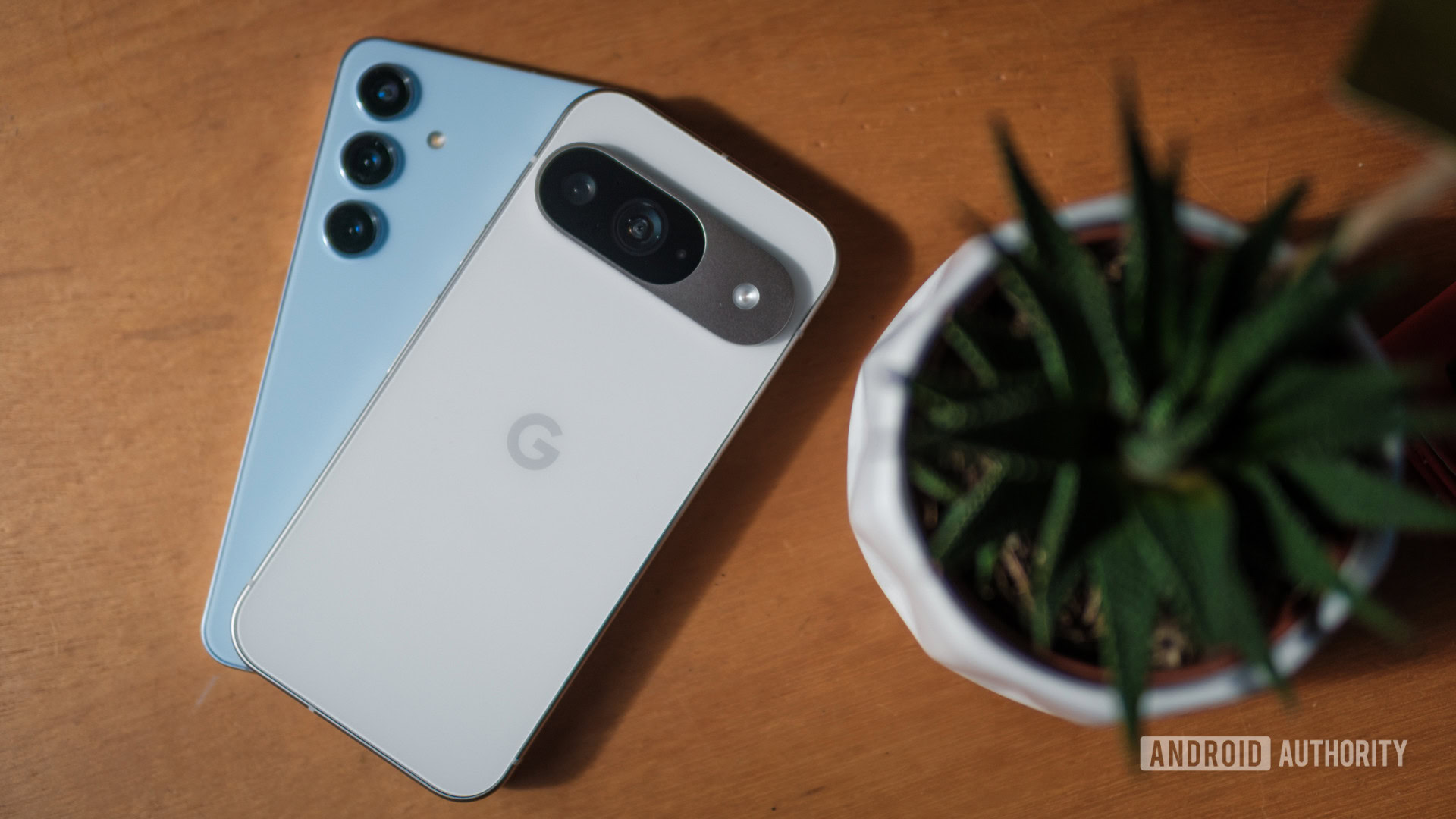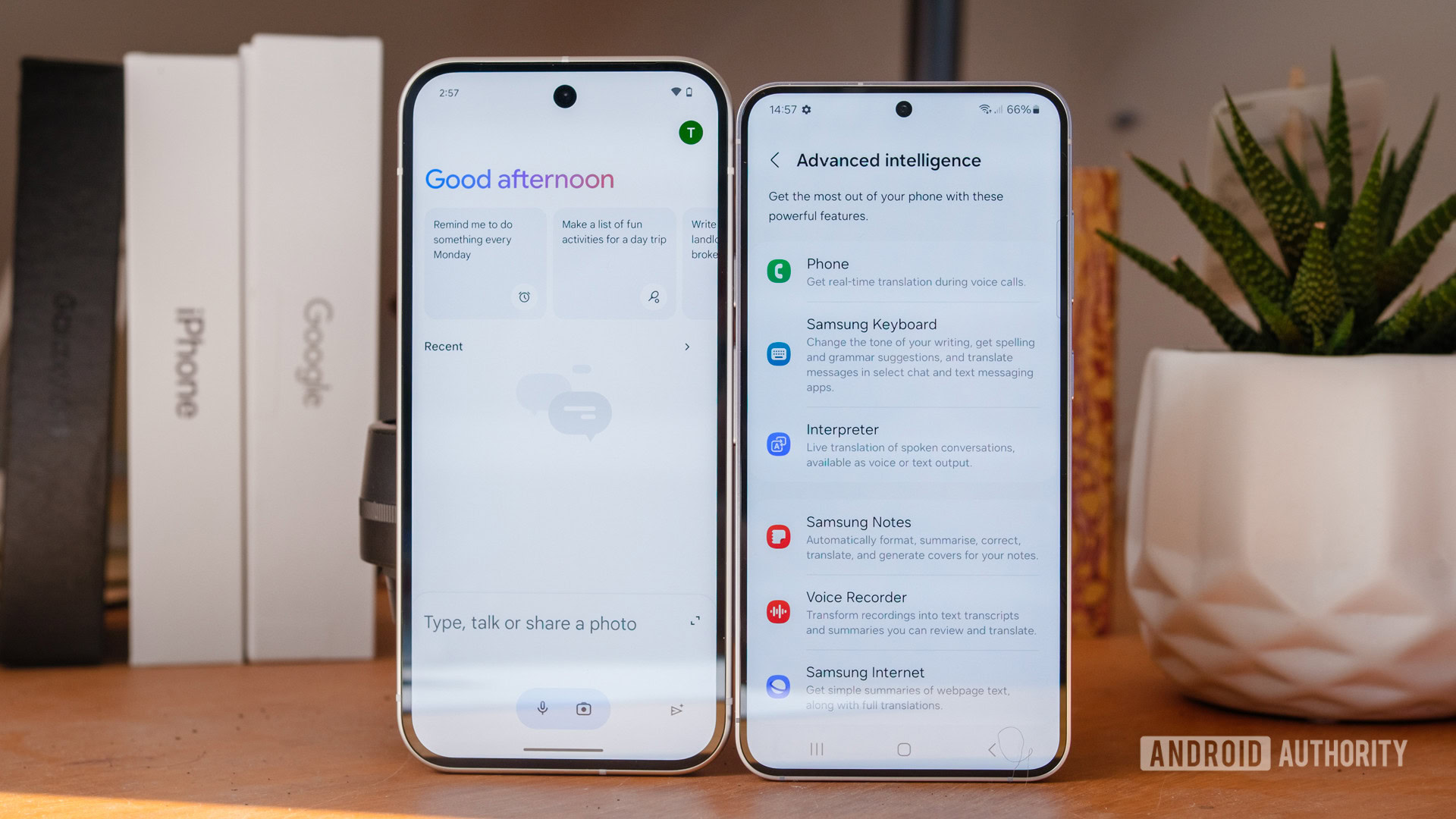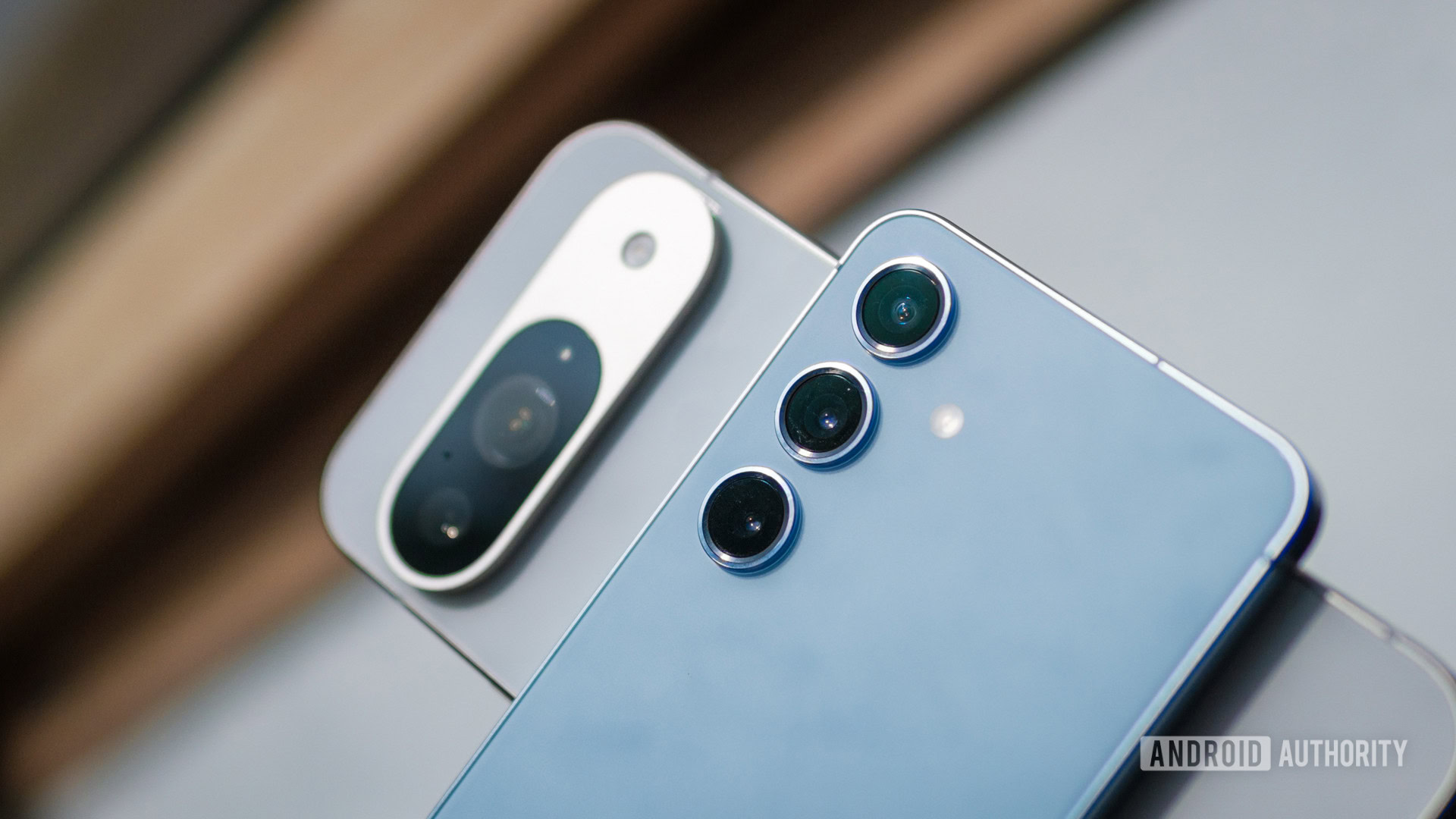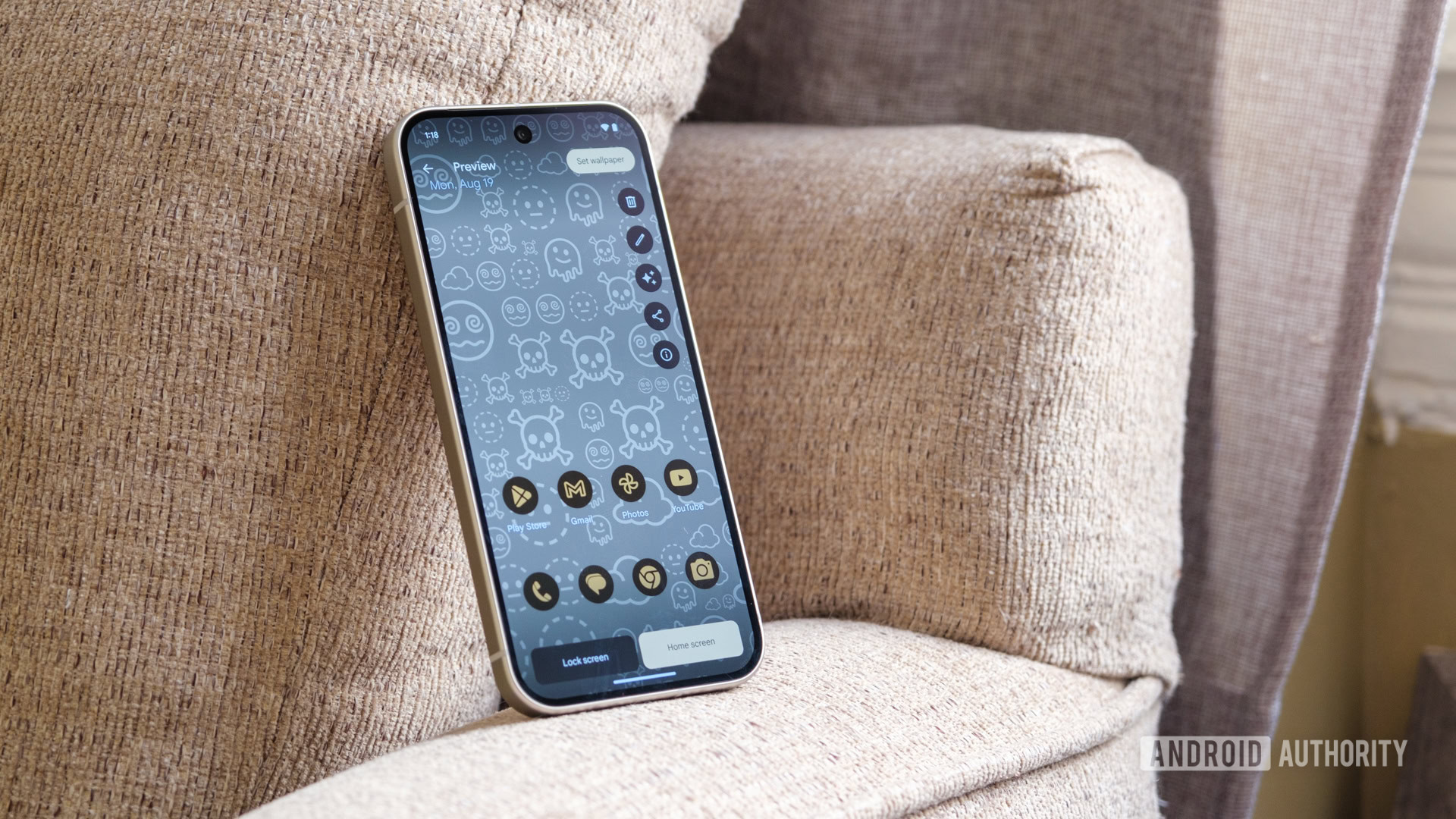Affiliate links on Android Authority may earn us a commission. Learn more.


The Google Pixel 9 isn't the value king I'd hoped for, but it can still match the Galaxy and iPhone
Published onMarch 7, 2025

Google Pixel 9
MSRP: $799.00
What we like
What we don't like

Google Pixel 9
When the Google Pixel 9 arrived on my desk for review, I quickly fell into a familiar pattern. After all, I’ve been using Pixels as a daily driver for years now. Solid photography? Check. A slick UI that’s easy to navigate? Check also. AI up to the eyeballs? You bet. Affordable? Well… (insert vinyl scratch noise)… not so much.
As polished as the Pixel experience feels in this latest iteration, I can’t help but return to this generation’s $100 price increase. In just two years, Google’s entry-level flagship has gone from a very approachable $599 to an iPhone and Galaxy rivaling $799. We all loved the Pixel series for undercutting the competition, but with that no longer the case, the Pixel 9 has to work that bit harder to stand toe-to-toe with its rivals.
Right out of the (cheap) box, this feels like a different Pixel.
It’s not that Google isn’t doing more to justify that price increase from the Pixel 8. There’s some new camera hardware, more RAM, an ultrasonic fingerprint reader, and a new Tensor G4 processor. There’s also undeniably an iPhone-inspired element to the Pixel’s new design, running right through the powerhouse Pro XL to the little Pixel 9. There’s a little extra weight, a chunky metal frame, and rounded corners on a flat display that will make iPhone familiars swoon. I like it; it feels great in hand, but it is certainly different from previous Pixels.
Samsung has always been wary of slipping into Apple’s shadow, but if you’ve wanted an Android phone in an Apple shell, the Pixel 9 is probably as close as we’ll come. But is this the best phone you can buy for $799? Well, I spent a week with the Pixel 9 and its rivals to find out.
AI is the tagline, but do you care?

Yes, I know there are lots of hardware bits to get into, but I’m going to jump into the big sales banner differentiator here — AI. Apple has its own offering in this regard with Apple Intelligence. available on the iPhone 16, and we have Galaxy AI and Google AI suites to pick from at $799. After perusing the latter two, I found plenty of common features: Circle to Search provides visual search functionality on both, and the two-sport live language translation, generative image editing, and transcription notes (see above). All pretty useful stuff that I occasionally dipped in and out of during the review week.
Samsung has fewer AI tools at its disposal overall, but there’s also a key difference in their approach. Samsung has embedded AI tools specifically into its web browser, keyboard, and gallery apps. The benefit is that these tools are more immediately accessible and useful, right where you’re most likely to use them. When I need a quick web page summary or translation, or aren’t quite happy with the way an email or text sounds, Galaxy AI is at my fingertips — providing that you remain faithful to Samsung’s browser and keyboard, which is a bit of a drawback. I like this idea, but web summarization is the only Galaxy AI tool I keep going back to.
Google has the most AI tools in the business, but I'm not convinced it's the reason to buy the Pixel 9.
Google also has AI features dropped about, but I spent most of my time with the Pixel 9’s new Gemini assistant and app (which you can download on the Galaxy S24, Galaxy S25, and other Android phones). Rather than specific tasks, Gemini is great for a back-and-forth chat to ask humdrum questions or get more advanced things done. I’ve used Gemini a fair bit even before the Pixel 9; it’s a solid language model with capabilities ranging from coding to writing, though it still makes common mistakes. It can also handle small tasks, like setting an alarm and checking your calendar, so I’ve had no hesitation about dropping it in for the increasingly dysfunctional Google Assistant (Gemini still calls Assistant to handle these little tasks). But I did have to jump through some classically convoluted Google account settings menus to get it all set up.
Unfortunately, the Pixel 9 doesn’t come with a free year of Gemini Live; that’s reserved for the Pro models. Likewise, Video Boost and a bunch of other celebrated Pixel features powered by AI are also MIA. $799 does not buy you the very best of Google’s AI, while Samsung offers the same features across all its flagships.
Still, once you factor in Pixel Studio, Call Screen, imaging goodies like the pretty decent Add Me, the tried-and-tested Magic Eraser (I don’t think Magic Editor is much good; its results are very rough, just like Samsung’s Galaxy AI alternative), and proofreading in Gboard, the Pixel 9 has pretty much everything Galaxy AI has to offer and a whole lot more. Undoubtedly, the Pixel 9 is the affordable AI phone to beat, but the question is, should you care about the AI buzz enough to pay that extra $100?
Well, I’ve found that the novelty wears off pretty quickly. There are only so many AI wallpapers and Pixel Studio art you can stare at, and I don’t take enough screenshots to even remember the new Screenshots app is a thing. As good as Gemini is, it’s not the productivity powerhouse on a small screen that it can be on a laptop; moving info between apps just takes too many swipes and presses. The best I could do was set up Quick Tap to launch Gemini, but my experience hasn’t convinced me to spring for a Gemini Advanced subscription. Tight integration is where Samsung’s approach has the advantage, but Google’s Gemini-centric take means you can completely hide the stuff you don’t want, which many will prefer.
During my review, I’ve found Add Me to be pretty useful on several occasions (finally, I can be in my family photos!), and I can’t live without classics like Call Screening and the more recent Top Shot. The Pixel-exclusive goodies are more than the sum of their parts, even if there isn’t really a single killer AI app. With that in mind, I’m not sure they’re worth buying the Pixel 9 for on their own, as a fair number of them are available on older Pixels, and the Pro models have some of the better new tools. Perhaps the revamped camera setup swings things in its favor?
Few camera upgrades, but still one of the best

The big camera change compared to 2023’s Pixel 8 is a new high-resolution (48MP) ultrawide camera. Unfortunately, it doesn’t receive a selfie upgrade like the Pro models, and there’s still no telephoto camera, leaving the Samsung Galaxy S24 winning the spec battle for the more flexible budget snapper. The proof, however, is in the photos, and we know that Google’s software is the top drawer, so let’s dive in. You can find full-res snaps in this Google Drive folder.
With only minor changes under the hood, you know what to expect here. The Pixel 9 offers one of the best camera phone experiences in its price tier (even with the hike), with a highly consistent, muted/realistic color profile, plenty of detail in daylight, and solid low-light snaps too. It sits comfortably between the punchy saturation of Samsung’s Galaxy and the overly grim contrast of Apple’s iPhone. If I have one complaint, it’s that pictures consistently come out on the warm side, which looks cozy but isn’t always accurate.
Let’s take a look at that new ultrawide. The 48MP resolution doesn’t produce larger files; it’s still 12MP, and there’s no Pro mode to switch to full-res. Still, by pixel-binning this larger sensor down, the Pixel 9 can capture more light and dynamic range than its predecessor. In terms of general color and exposure profile, the new ultrawide is a good match for the main lens, but it is a little more saturated. It’s also marginally narrower than its predecessor at 123 versus 125 degrees, but that’s a small difference, and it’s more than ample for fitting a ton in.
Despite the upgrades, the Pixel 9’s ultrawide camera has its share of flaws that are easily spotted when cropping in. Details are noisy and mushy in these overcast pictures, which is disappointing for a high-resolution sensor, and the camera’s wider aperture means there’s a loss of focus between foreground and background, which is the opposite of what you want in a good ultrawide landscape snap. Granted, you’re more likely to zoom in than use the ultrawide when capturing fine details, but these drawbacks are something to consider if you plan on printing and blowing up your snaps.
Speaking of zoom, the lack of a telephoto camera means the Pixel 9 is at a distinct disadvantage compared to the Samsung Galaxy S24 and its 3x optical zoom. It handles details well at 2x and looks passable to about 4x, but anything beyond that looks beyond rough. I compared the phone against the S24 at various zoom factors, and while there’s not a huge difference in their general presentation, the Galaxy is clearly better when it comes to fine details and dynamic range, especially as the zoom factor scales up. However, neither is capable of taking particularly long-range pictures.
Google knows all about the phone’s limitations, capping the Pixel 9’s zoom capabilities at a pretty meager 8x. I can’t help but feel the phone would really benefit from Google’s Zoom Enhance upscaling, but this feature is reserved for its more expensive Pro models that already have a very capable 5x zoom lens.
Finally, onto the selfie camera. Despite the lack of upgrades, the Pixel 9 performs well for its price. It handled tricky lighting conditions better than the identically priced Galaxy S24, ensuring a brightly and evenly lit subject at the expense of some added noise, over-sharpness, and a dose of added warmth. The Pixel 9 ensures that your selfies look pretty good all the time.
Still, my chief complaint with this selfie camera remains: skin textures and fine details can look a bit rough. The same goes for bokeh blur edge detection, which often misses stray hairs. Samsung does this better, at least. Oh, and the ultrawide field of view makes my head look too narrow. I wish I were that trim.
Is the Pixel 9 still a great camera phone? In my opinion, absolutely, but there are still caveats. The main lens and selfie options are still great and arguably the best around at this price, even if they’re not new. Still, ultrawide and zoom capabilities are more hit-and-miss, and those who need maximum flexibility from their smartphone camera can do better by looking elsewhere.
For videographers, there’s not a lot new here either, but the capabilities remain solid. Cinematic Pan, Blur, Slow Motion, and Time Lapse augment the standard 4K/60 and 4K/30 HDR shooting capabilities that apply to all the lenses. Footage continues to look just dandy, and while there are no manual controls, Google’s software extras are just enough to get creative. However, if you want Google’s best 8K upscaling, Night Sight, and Super Res Zoom video features, you’ll find those locked to the Pixel 9 Pro models.
Pixel performance isn’t quite where it’s at
So, let’s get into what else $799 buys you. Compared to the Galaxy S24, both have a snappy ultrasonic fingerprint scanner that’s a solid upgrade over the Pixel 8 and is faster than Apple’s affordable biometric scanner. This might not seem like the Pixel’s biggest change, but it quickly adds up when you’re unlocking your phone multiple times a day. Plus, it’s nice not to be blinded at night anymore.
Charging capabilities are also very similar. The Pixel 9 now hits 27W wired charger (with a compatible plug), which is in the same ballpark as the Galaxy S24’s 25W and far better than Apple’s measly 20W. The two Android rivals are also a dead lock with 15W wireless charging support. However, the Pixel 9’s larger battery means that it still takes longer to charge, hitting full in a snailpaced 85 minutes compared to an also slow 71 minutes for Samsung’s flagship. Google’s phone also hits much higher peak temperatures while charging, and the handset is much warmer to the touch.
That bigger battery is a boon for making it through a full day, though, with the Pixel 9 besting the Galaxy S24 in most of our battery benchmarks. That said, the S24 is comparable in terms of web browsing time and steams ahead with 4K playback. Still, let’s chalk this up as a win for Google.
Other Pixel hardware wins are a bit harder to find. The Pixel 9’s 120Hz display is great to look at but is locked to a sluggish feeling 60Hz out of the box to save battery life; you have to manually enable 120Hz mode. It’s also not a fancy dynamic refresh LTPO panel like on the Galaxy S24, which likely explains how the latter still offers great battery life for web browsing and media playback. If you’re looking for blazing-fast performance at this price, Google’s handset isn’t quite up to scratch either. Not that you’ll notice the difference for day-to-day apps; the Pixel 9 has been like butter browsing the web for me.
We’ve taken a deep dive into the Tensor G4 already; the TL;DR is that the G4 only makes marginal improvements over 2023’s Tensor G3. As such, the Galaxy S24’s custom Snapdragon 8 Gen 3 remains the chip of choice for gaming out of these three mainstream handsets. The good news for the Tensor G4 is that it’s not far off the gaming performance of the iPhone 15 and shows some improvements to sustained performance over its predecessor. However, I noticed the phone is pretty warm after charging and running some AI tasks, so the performance boost comes at the expense of extra heat.
A high-performance handset, the Pixel is not.
Google has clearly made efforts to close the gap on Apple and Samsung hardware, and the new fingerprint scanner is a particular boon. However, for $799, the Galaxy S24 (and Galaxy S25 for that matter) remains a better all-round hardware package, especially if you want to stay in Android land and want future-proof performance for gaming.
Is the Google Pixel 9 a good buy at $799?

Between its wonderful build, good-as-ever photography capabilities, and new AI tool, the Pixel 9 is certainly Google’s best entry-level flagship yet. However, we should expect nothing less from a phone that costs $100 more. Still, all the new additions and seven years of promised support make this phone worth every penny, even when pitted directly against the best from Apple and Samsung.
Still, that doesn’t mean the Pixel 9 is a slam-dunk recommendation. The phone’s value proposition is definitely lessened if you’re not intrigued by Gemini and the various imaging manipulation tools onboard. Rival phones, launched in the wake of the Pixel 9, offer faster performance, additional cameras, and speedier charging for around the same money. The Galaxy S2s ($809.99 at Amazon), iPhone 16 ($799 at Amazon), OnePlus 13 ($899.99 at OnePlus), and others are all good buys if you’re looking for the most hardware for your money without all the AI doodads. Still, I’d encourage you to give the Pixel 9 a chance; despite its minor drawbacks, it’s a solid hardware package that feels very close to turning the page on the next mobile era.
It's not the value king anymore, but the Pixel 9 is Google's best entry-level flagship yet.
If you really think AI is the next big thing, you might be better off spending $200 more on the Pixel 9 Pro ($999 at Amazon). It comes with one year of Gemini Advanced and 2TB Drive storage via the Google One AI Premium Plan, which pretty much pays for itself. Then there’s advanced Video Boost features, more RAM specifically for AI, and the Pro series has, historically, been higher up the pecking order when it comes to Feature Drops. The phone also has a nicer LTPO display, an additional periscope camera for long-range zoom, and the same compact size. For Pixel fans, the Pro is almost certainly worth that extra cash.
Those holding out for an affordable Pixel handset might feel disappointed in the Pixel 9’s value proposition and are in for a bit of a wait for the Pixel 9a. It might be worth it, though. In the meantime, the Pixel 9 is a brilliant, affordable flagship.

